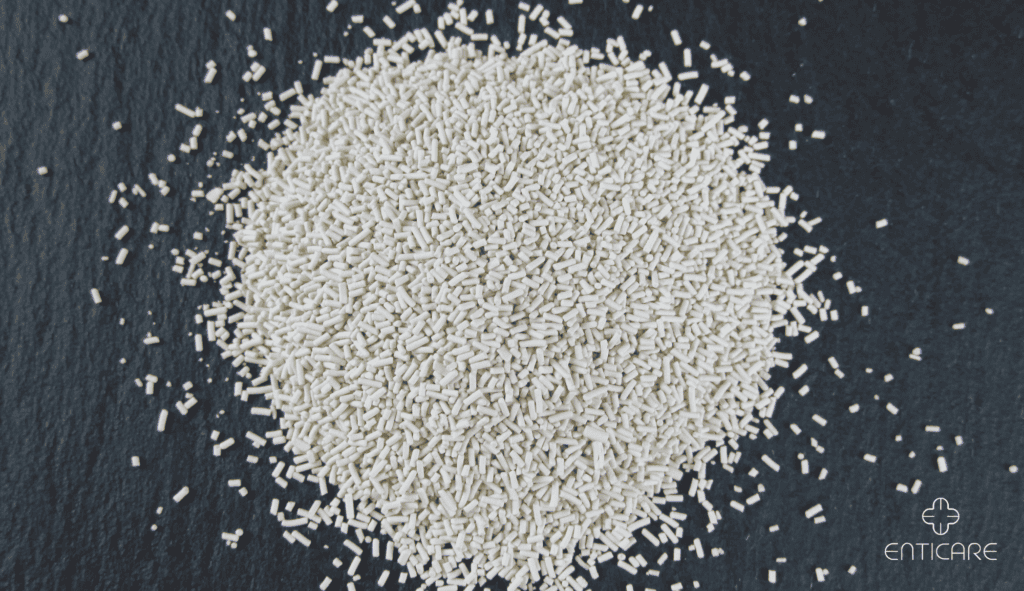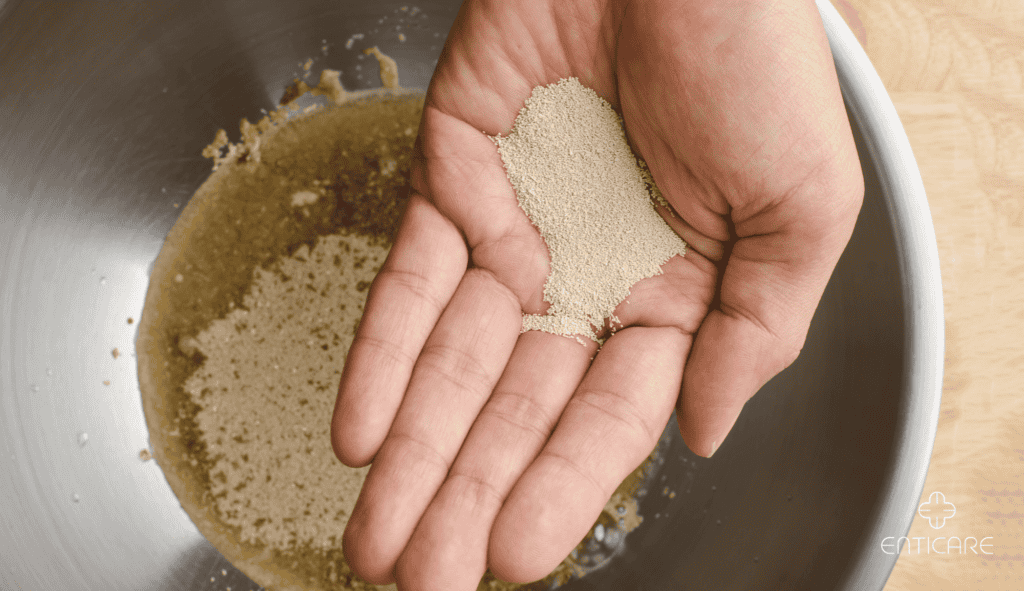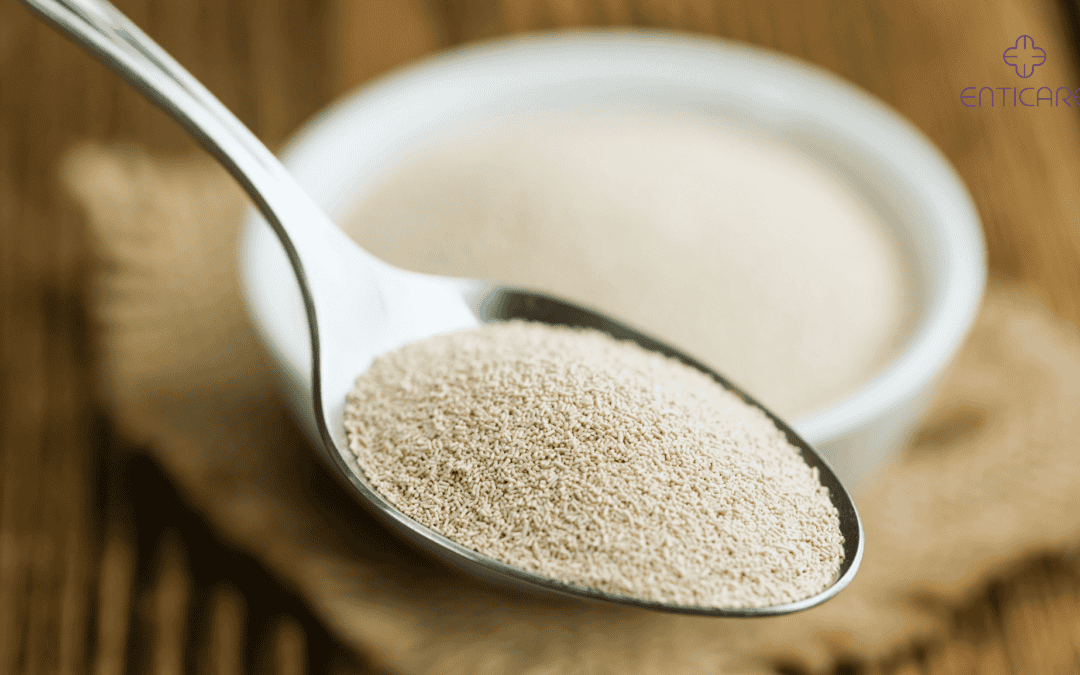If you suffer from an unexplained rash, stomach issues, or other persistent symptoms, you may be allergic to yeast. Yeast, a common ingredient in foods and drinks, can trigger allergic reactions in some people. Understanding the symptoms, risk factors, and foods you need to avoid can help you manage this condition and improve your quality of life.

What is a Yeast Allergy?
Yeast in Your Everyday Life
Yeast is a type of fungus that we encounter daily. Yeast plays a crucial role in food production, especially in baking and brewing. It’s present in bread, beer, wine, and other fermented foods. Yeast helps in baking and brewing, but for those with allergies, it can cause a variety of unpleasant reactions.
Difference Between Yeast Allergy and Yeast Intolerance
Yeast allergy is not the same as yeast intolerance. An allergy involves your immune system reacting to yeast as if it’s harmful, causing an allergic reaction. Intolerance, on the other hand, affects your digestion, and while it’s uncomfortable, it’s not life-threatening.
Candida and Yeast Allergies
Some people also have reactions to Candida, a form of yeast that lives in our bodies. Though Candida is naturally found in the mouth, gut, and skin, overgrowth can lead to health problems, such as a yeast infection. Candida overgrowth can lead to various health issues, including recurrent yeast infections and gastrointestinal problems. However, this is different from having a yeast allergy. For those with a yeast allergy, even small amounts of food can trigger symptoms.
Learn more about Candida here.
Symptoms of Yeast Allergy
Digestive Symptoms
If you have a yeast allergy, your body may react with gastrointestinal symptoms like bloating, gas, or diarrhea after consuming yeast-containing foods. This happens because your immune system recognizes the yeast as a threat, causing inflammation in the digestive system.
Skin Reactions
Yeast allergy can also show up as skin problems. Many people experience hives, rashes, or itchy skin. These symptoms may appear immediately after eating or sometimes hours later.
Respiratory Issues
In more severe cases, yeast allergies can lead to respiratory symptoms such as sneezing, wheezing, or a runny nose. In some cases, it could even cause asthma-like symptoms, making it hard to breathe.
Read more about allergy symptoms here.

Yeast Intolerance Symptoms
Yeast intolerance symptoms can vary widely from person to person, but they often include digestive issues such as bloating, gas, and abdominal pain. You might also experience diarrhea or constipation, along with nausea and vomiting. Beyond the digestive system, yeast intolerance can manifest as headaches, fatigue, skin rashes, and itching. Some people even report joint pain and stiffness.
These symptoms can appear within hours or even days after consuming foods or drinks that contain yeast. The root cause of yeast intolerance is often an inability to properly digest yeast, which can lead to an overgrowth of Candida albicans in the gut. This overgrowth can disrupt your digestive balance and trigger a range of uncomfortable symptoms.
Common Risk Factors for Yeast Allergy
Family History of Allergies
If allergies run in your family, you are more likely to develop a yeast allergy. Genetics plays a key role in your immune system’s response to different allergens.
Existing Allergies or Asthma
People who already have allergies or asthma are more likely to experience yeast allergies. This is due to their immune system being more sensitive and reactive to allergens.
Frequent Use of Antibiotics
Antibiotics kill harmful bacteria, but they also wipe out good bacteria in your gut. This disruption can cause yeast, like Candida, to overgrow, which can lead to allergic reactions. If you’ve taken antibiotics multiple times, your risk of developing a yeast allergy could be higher.
Foods to Avoid with Yeast Allergy
Baked Goods
Yeast is a key ingredient in bread, rolls, bagels, and other baked goods. If you have a yeast allergy, avoiding these items is essential. Even gluten-free versions may still contain yeast, so read labels carefully.
Fermented Foods and Drinks
Fermentation involves yeast, so foods like pickles, soy sauce, vinegar, and alcohol can trigger allergic reactions. Beer, wine, and other alcoholic beverages are common culprits because they rely heavily on yeast during production.
Processed Foods
Many processed foods, including some types of chips, crackers, and ready-to-eat meals, contain yeast or yeast extracts. These hidden sources can make it challenging to manage your diet, so always check the ingredients before purchasing.
Diagnosing a Yeast Allergy
Diagnosing a yeast allergy can be a challenging process, as the symptoms often mimic those of other allergies or conditions. However, several tests and methods can help determine whether you are allergic to yeast.
-
- Skin Prick Test: One common method is the skin prick test. During this test, a small amount of yeast extract is placed on your skin, and the area is pricked with a tiny needle. If you are allergic to yeast, you will develop a raised bump or redness at the site of the prick, indicating an allergic reaction.
- Blood Test: Another diagnostic tool is a blood test, which measures the levels of allergy-related antibodies in your blood. Elevated levels of these antibodies can indicate a yeast allergy, providing a clear picture of your immune system’s response to yeast.
- Elimination Diet: An elimination diet involves removing all yeast-containing foods and drinks from your diet for a period of time and closely monitoring your symptoms. If your symptoms improve or disappear during this time, it may suggest a yeast allergy. This method requires careful planning and should be done under the guidance of a healthcare professional.
- Medical History: Your doctor will also take a detailed medical history, asking about your symptoms, medical background, and lifestyle habits. This information can help identify patterns and potential triggers, making it easier to diagnose a yeast allergy.
Treatment Options for Yeast Allergy
If you have been diagnosed with a yeast allergy, several treatment options can help manage your symptoms and improve your quality of life.
-
- Avoidance: The most effective way to manage a yeast allergy is to avoid foods and drinks that contain yeast. This includes bread, baked goods, beer, and wine. Reading labels carefully and being mindful of hidden sources of yeast in processed foods is crucial.
- Antihistamines: For mild allergic reactions, such as rashes and itching, antihistamines can provide relief. These medications help reduce the body’s allergic response and alleviate symptoms.
- Epinephrine Pens: In cases of severe allergic reactions, an epinephrine pen can be a lifesaver. This device delivers a dose of epinephrine to prevent anaphylaxis, a potentially life-threatening reaction. If you have a severe yeast allergy, carrying an epinephrine pen is essential.
- Immunotherapy: Also known as allergy shots, immunotherapy can help desensitize your immune system to yeast over time. This treatment involves regular injections of small amounts of the allergen, gradually reducing your sensitivity and symptoms.
- Medications: Other medications, such as corticosteroids and decongestants, can help manage yeast allergy symptoms. These treatments reduce inflammation and alleviate respiratory issues, making it easier to breathe and reducing discomfort.
Managing Yeast Allergies and Intolerances
Effectively managing yeast allergies and intolerances requires a combination of dietary changes, lifestyle modifications, and medical treatments. Here are some practical tips to help you navigate this condition:
-
- Dietary Changes: Avoiding foods and drinks that contain yeast is essential. This means steering clear of bread, baked goods, beer, wine, and other fermented products. Reading labels carefully and asking about ingredients when dining out can help you avoid accidental exposure.
- Lifestyle Modifications: Reducing stress and boosting your immune system can also help manage yeast allergies and intolerances. Regular exercise, adequate sleep, and a balanced diet rich in fruits, vegetables, and whole grains can support your overall health and reduce symptoms.
- Medical Treatment: Medications such as antihistamines and epinephrine pens can help manage allergy symptoms. Working with a healthcare professional to develop a treatment plan tailored to your needs is crucial.
- Probiotics: Maintaining a healthy gut microbiome is important for managing yeast intolerance. Probiotics can help balance the good bacteria in your gut, reducing yeast overgrowth and alleviating symptoms.
- Candida Overgrowth Treatment: If you have candida overgrowth, treatment may involve antifungal medications and dietary changes to reduce sugar and processed food intake. This approach can help restore balance in your digestive system and reduce discomfort.
Take Control of Your Yeast Allergy
If you suspect that yeast is causing your health issues, don’t wait for the symptoms to worsen. It is important to get a diagnosed yeast allergy to effectively manage the condition. If you have a yeast allergy, it is crucial to avoid yeast-containing foods and beverages to prevent allergic reactions. By understanding the symptoms, risk factors, and foods to avoid, you can take steps to manage this condition effectively. Early diagnosis and treatment can make a huge difference in your daily life and overall health.
Take the first step toward relief today. Schedule an appointment with a specialist who can help you identify and manage your yeast allergy. Visit Enticare’s Allergy Services to get the support and guidance you need.


